

Articles
How To Fix Tough Meat In Slow Cooker
Modified: August 16, 2024
Learn how to fix tough meat in your slow cooker with these helpful articles. Get tips and tricks to make your meals tender and delicious.
(Many of the links in this article redirect to a specific reviewed product. Your purchase of these products through affiliate links helps to generate commission for Storables.com, at no extra cost. Learn more)
Introduction
There’s nothing more frustrating than spending hours preparing a delicious meal in your slow cooker, only to find that the meat has turned out tough and chewy. Tough meat can be a common issue when using a slow cooker, but don’t worry, there are ways to fix it and achieve tender and juicy results.
In this article, we’ll explore the potential causes of tough meat when using a slow cooker and provide you with valuable tips and techniques to overcome this challenge. With a little know-how and some simple adjustments, you can turn tough meat into a mouthwatering masterpiece.
Let’s dive in and discover how to rescue tough meat in your slow cooker.
Key Takeaways:
- Transform tough meat in your slow cooker into succulent perfection by tenderizing with acidic marinades, utilizing low and slow cooking, and choosing the right cuts for melt-in-your-mouth results.
- Elevate the tenderness and juiciness of your slow-cooked dishes by adding moisture, adjusting cooking times, and allowing the meat to rest before serving. Master the art of tenderizing tough meat for delectable meals.
Understanding the Issue with Tough Meat
Tough meat can be the result of various factors, including the type of cut used, the cooking time and temperature, and the presence of connective tissues. When meat is cooked at high temperatures, the muscle fibers contract and tighten, leading to a tough and chewy texture.
Connective tissues, such as collagen and elastin, are present in certain cuts of meat. These tissues are responsible for the structure and support of the muscle, but they can be tough if not properly cooked. Slow cooking can help break down these tough connective tissues and transform them into gelatin, resulting in a more tender and flavorful meat.
However, if the cooking time or temperature is not optimized, the connective tissues may not break down completely, leaving the meat tough and unpleasant to eat. Additionally, some cuts of meat naturally have more connective tissues than others, which means they require longer cooking times to become tender.
Another potential factor contributing to tough meat is the lack of moisture during the cooking process. As meat cooks in the slow cooker, it can release juices that are crucial for maintaining moisture and tenderness. If the cooking environment is too dry, the meat can become dry and tough as well.
Now that we have a better understanding of the issues that can result in tough meat, let’s explore some tips and techniques to tenderize and transform that tough meat into a delectable dish.
Tips for Tenderizing Tough Meat
Tenderizing tough meat is a crucial step in achieving a melt-in-your-mouth texture. Here are some effective tips to help you tenderize tough meat:
- Use a meat mallet: Pound the meat with a meat mallet to break down the muscle fibers and loosen the connective tissues. This will help tenderize the meat and make it more enjoyable to eat. Be sure to cover the meat with plastic wrap or place it in a resealable bag before pounding to prevent any mess.
- Consider using a meat tenderizer: Meat tenderizers contain enzymes or salts that help break down the tough fibers in the meat and enhance its tenderness. Simply sprinkle or massage the tenderizer into the meat before cooking.
- Marinate the meat: Marinating the meat before cooking can help tenderize it. Acidic ingredients like lemon juice, vinegar, or yogurt can help break down the proteins in the meat and make it more tender. Let the meat marinate in the refrigerator for at least an hour, or overnight for tougher cuts.
- Opt for low and slow cooking: Cooking tough meat slowly and at a low temperature allows the connective tissues to break down gradually and become tender. Choose the low setting on your slow cooker and cook the meat for a longer duration. This method is especially effective for tougher cuts like chuck roast or brisket.
- Add moisture to the cooking process: To prevent the meat from drying out and becoming tough, add liquids such as broth, wine, or even water to the slow cooker. The added moisture will help keep the meat moist and tender.
- Consider using a tenderizing marinade: Besides traditional marinades, you can also try using tenderizing marinades that are specifically designed to tenderize tougher cuts of meat. These marinades usually contain ingredients like papaya, pineapple, or kiwi, which contain natural enzymes that break down the proteins in the meat.
- Choose the right cuts of meat: Some cuts of meat are naturally more tender than others. Opt for cuts labeled as “tender” or those from the animal’s less-worked muscles, such as filet mignon or ribeye. If you prefer using tougher cuts, be prepared to give them extra attention and cooking time to achieve tenderness.
By following these tips, you can significantly improve the tenderness of tough meat and transform it into a succulent and flavorful dish.
Marinating for Maximum Tenderness
Marinating meat is an excellent technique for maximizing tenderness and flavor. Marinating involves soaking the meat in a mixture of ingredients, allowing them to penetrate and break down the tough fibers, resulting in a more tender and flavorful outcome. Here are some key tips for marinating tough meat:
- Choose the right marinade: The marinade you use plays a vital role in tenderizing tough meat. Opt for marinades that contain acidic ingredients like lemon juice, vinegar, or buttermilk. The acid helps to break down the proteins in the meat and tenderize it. You can also add flavorful ingredients like herbs, spices, and oils to enhance the taste.
- Allow enough time to marinate: To achieve maximum tenderness, allow the meat to marinate for an adequate amount of time. For tougher cuts of meat, a minimum of 2 hours is generally recommended, but overnight marination can yield even better results. Make sure to marinate the meat in the refrigerator to prevent bacterial growth.
- Use a resealable bag or airtight container: Place the meat and the marinade in a resealable bag or an airtight container to ensure that the flavors are evenly distributed and the meat is fully immersed in the marinade. This method also helps prevent any leaks or spills.
- Gently massage the marinade into the meat: Before sealing the bag or container, gently massage the marinade into the meat. This helps the marinade penetrate further and ensures that all surfaces of the meat are coated evenly.
- Don’t reuse marinade: Never reuse marinade that has come into contact with raw meat, as it can be contaminated with harmful bacteria. If you want to use the marinade for basting or as a sauce, reserve a portion of it before marinating the meat.
- Experiment with different marinade flavors: Don’t be afraid to get creative with your marinades. Experiment with different combinations of herbs, spices, citrus juices, and even soy sauce or Worcestershire sauce. The flavors you choose can greatly impact the taste and tenderness of the meat.
Remember that the acidity in some marinades can also slightly “cook” the meat, so be mindful of marinating times to avoid a mushy texture. With proper marinating techniques and the right combination of ingredients, you can elevate the tenderness and flavor of even the toughest cuts of meat.
Utilizing Acidic Ingredients
When it comes to tenderizing tough meat, acidic ingredients can be incredibly effective. The acidity helps to break down the proteins in the meat, resulting in a more tender and flavorful outcome. Here are some ways you can utilize acidic ingredients to tenderize tough meat:
- Lemon Juice: The natural acidity of lemon juice makes it a great tenderizing agent. Squeeze fresh lemon juice over the meat or incorporate it into marinades to help break down the tough fibers and infuse a subtle citrus flavor into the meat.
- Vinegar: Vinegar, particularly cider vinegar or white vinegar, can also work wonders on tough meat. Its acidic properties help to break down proteins and add a tangy flavor. Use vinegar as a marinade ingredient or simply splash some over the meat before cooking.
- Buttermilk: Buttermilk, although not as acidic as lemon juice or vinegar, contains lactic acid that can tenderize tough meat. Soak the meat in buttermilk for a few hours or overnight to impart tenderness and a slight tang to the meat.
- Yogurt: Yogurt is another great acidic ingredient for tenderizing tough meat. The natural enzymes and acidity in yogurt work to break down proteins and create a tender texture. Use yogurt as a marinade base or mix it with spices for a flavorful and tenderizing meat coating.
- Pineapple Juice: Pineapple contains an enzyme called bromelain that has strong tenderizing properties. The enzyme breaks down proteins and collagen in the meat, resulting in a more tender texture. Use pineapple juice in marinades or as a tenderizing ingredient for tough cuts.
- Papaya: Papaya contains an enzyme called papain, which has powerful tenderizing properties. Use ripe papaya pulp or juice as a meat tenderizer, but be cautious as its enzymes can be quite potent and can overly tenderize the meat if left for too long.
When using acidic ingredients, it’s important to find the right balance. Too much acidity or marinating for too long can actually start to “cook” the meat and make it mushy. Experiment with different ratios and marinating times to achieve the desired level of tenderness without compromising the texture. Additionally, always be mindful of any food sensitivities or allergies when incorporating acidic ingredients into your cooking.
By incorporating acidic ingredients into your cooking, you can enhance the tenderness and flavor of tough meat, turning it into a delicious and satisfying meal.
Read more: How To Cook In Slow Cooker
Using the Slow Cooker Properly
The slow cooker is a fantastic tool for cooking tough cuts of meat to tender perfection. However, it’s important to use it properly to ensure the best results. Here are some tips for using the slow cooker effectively:
- Preheat the slow cooker: It’s a good practice to preheat your slow cooker before adding the ingredients. This ensures that the cooking process starts off at the right temperature and helps to avoid any temperature fluctuations during the cooking time.
- Layer ingredients properly: Layering ingredients in the slow cooker is crucial for even cooking. Place tougher cuts of meat at the bottom to allow them to be closer to the heat source. Next, layer vegetables or other ingredients on top to prevent the meat from sitting directly on the bottom.
- Avoid overcrowding the slow cooker: Give the food in the slow cooker enough space to cook properly. Overcrowding can lead to uneven cooking and may result in some parts of the meat being undercooked, while others are overcooked. If necessary, use a larger slow cooker or cook in batches.
- Minimize lifting the lid: The slow cooker works by trapping heat and moisture inside. Opening the lid allows heat to escape and can significantly increase the cooking time. Try to resist the temptation to continuously check on the food. Only remove the lid when necessary, such as for adding ingredients or seasoning.
- Follow the recipe guidelines for cooking time and temperature: Different recipes may require different cooking times and temperatures. Follow the specific guidelines provided in the recipe to ensure that the meat is cooked to the desired level of tenderness.
- Do not remove excess fat from the meat: Fat adds flavor and moisture to the meat during the slow cooking process. Leave any excess fat on the meat to enhance the tenderness and flavor. You can always skim off any excess fat after the meat is cooked.
- Avoid adding frozen meat directly into the slow cooker: It’s best to thaw frozen meat before placing it in the slow cooker. Adding frozen meat can significantly increase the cooking time and may result in unevenly cooked meat. Plan ahead and thaw the meat in the refrigerator before slow cooking.
- Utilize the low setting for tougher cuts of meat: Tough cuts of meat benefit from longer, slower cooking. The low setting on the slow cooker is ideal for breaking down the tough connective tissues and achieving a tender texture. If you’re short on time, you can use the high setting, but keep an eye on the meat to avoid overcooking.
By following these guidelines, you can make the most out of your slow cooker and achieve tender and delicious results with even the toughest cuts of meat.
Add some acidic ingredients like tomatoes, vinegar, or citrus juice to help break down tough meat fibers in the slow cooker. This will help tenderize the meat and make it more enjoyable to eat.
Adjusting Cooking Times and Temperatures
Cooking times and temperatures play a crucial role in achieving tender meat in the slow cooker. Here are some tips for adjusting cooking times and temperatures to ensure optimal tenderness:
- Extend the cooking time: For tougher cuts of meat, such as chuck roast or brisket, it’s important to cook them for a longer duration to break down the tough connective tissues. Increasing the cooking time allows for more collagen to convert into gelatin, resulting in tender meat. Consider adding an extra hour or two to the recommended cooking time for these cuts.
- Utilize the “low” setting: The low setting on the slow cooker is ideal for achieving tender meat. This setting allows for a longer cooking time at a lower temperature, providing ample time for collagen to break down and resulting in tender and juicy meat. If you have the time, opt for the low setting rather than the high setting.
- Use a meat thermometer: The best way to ensure that your meat is cooked to the desired level of tenderness is by using a meat thermometer. Different cuts of meat have different recommended internal temperatures for optimal tenderness. Use the thermometer to check the doneness of the meat and adjust the cooking time accordingly.
- Consider a longer resting time: After the meat has finished cooking in the slow cooker, allow it to rest for a few minutes before slicing or shredding. Resting allows the juices to redistribute and results in a more tender and flavorful final product.
- Adjust for personal preferences: Cooking times and temperatures can vary depending on personal preferences for meat doneness. If you prefer your meat to be more tender, you may want to increase the cooking time slightly. On the other hand, if you prefer a firmer texture, you can reduce the cooking time.
- Experiment with different meat cuts: Each cut of meat has its own ideal cooking time and temperature for achieving tenderness. Some cuts are naturally more tender and require less time, while others benefit from longer cooking. Experiment with different cuts to find the ones that suit your preferences and cooking style.
It’s important to note that cooking times and temperatures can vary based on the specific slow cooker model and size of the meat. Always refer to the recipe guidelines and consider the unique characteristics of your slow cooker when adjusting cooking times and temperatures.
By adjusting your cooking times and temperatures based on the cut of meat and personal preferences, you can ensure that your slow-cooked dishes come out tender and melt-in-your-mouth delicious.
Adding Moisture to the Slow Cooker
One of the key factors in achieving tender meat in a slow cooker is maintaining adequate moisture throughout the cooking process. Here are some tips for adding moisture to the slow cooker and ensuring juicy and tender results:
- Include liquid ingredients: Adding liquid ingredients to the slow cooker is essential for creating a moist cooking environment. Use broth, stock, wine, beer, or even water to provide ample moisture during the cooking process. The liquid will help to steam and braise the meat, resulting in juicy and tender results.
- Don’t overdo the liquid: While it’s important to add enough liquid for moisture, be cautious not to add too much. The slow cooker works by trapping steam and moisture, so adding excessive liquid can make the dish overly soupy and dilute the flavors. Follow the recipe guidelines, but as a general rule, aim for about 1/2 to 1 cup of liquid for most recipes.
- Layer the ingredients properly: Layering ingredients in the slow cooker can help to retain moisture. Place the meat at the bottom and layer vegetables or other ingredients on top to prevent the meat from drying out. This allows the vegetables to catch any drippings from the meat, further enhancing the flavor and moisture.
- Baste the meat: During the cooking process, periodically baste the meat with the cooking liquid. This helps to ensure that the meat stays moist and absorbs the flavors. Use a ladle or a basting brush to gently coat the meat with the liquid in the slow cooker.
- Add vegetables or fruits: Including vegetables or fruits in the slow cooker not only adds flavor and nutrients to the dish but also helps to maintain moisture. Vegetables release moisture as they cook, which helps to keep the meat moist. Fruits like tomatoes, apples, or citrus fruits can also contribute their natural juices and acidity, enhancing the tenderness of the meat.
- Cover the slow cooker tightly: Ensure that the lid of the slow cooker fits tightly and seals the cooking vessel properly. This prevents moisture from escaping and helps to create a steamy environment inside the slow cooker, keeping the meat tender and moist.
- Be cautious with dairy-based liquids: If you’re using dairy-based liquids like milk, cream, or yogurt, add them towards the end of the cooking process. Dairy can curdle or separate when exposed to high heat for a long period, so it’s best to add it during the last hour or so of cooking.
By incorporating these tips and techniques to add moisture to your slow cooker, you can ensure that your meat dishes come out succulent, tender, and full of flavor.
Choosing the Right Cuts of Meat
Choosing the right cuts of meat is crucial for achieving tender and juicy results in the slow cooker. Some cuts naturally lend themselves to slow cooking methods, while others may require additional techniques to become tender. Here are some tips for choosing the right cuts of meat:
- Opt for cuts with higher collagen content: Collagen is a connective tissue that becomes gelatinous and tender when cooked low and slow. Cuts of meat with higher amounts of collagen, such as chuck roast, brisket, or short ribs, are ideal for slow cooking. These cuts require longer cooking times to break down the collagen and achieve a melt-in-your-mouth texture.
- Look for well-marbled cuts: Marbling refers to the small streaks of fat dispersed throughout the muscle fibers. These intramuscular fat pockets add moisture and flavor to the meat during the slow cooking process. Cuts like ribeye, pork shoulder, or lamb shanks are well-marbled and contribute to tender and flavorful dishes.
- Consider tougher cuts: Some cuts of meat come from muscles that are more active and, therefore, have more connective tissue. While these cuts may be tough, they develop rich flavors and become tender when slow-cooked. Examples include chuck roast, beef brisket, pork shoulder, or lamb shoulder. With patience and proper cooking techniques, these tougher cuts can yield incredibly tender and flavorful results.
- Lean cuts may require additional techniques: Lean cuts of meat, such as chicken breasts or pork tenderloin, can easily dry out in the slow cooker. If you prefer lean cuts, consider adding moisture-rich ingredients like broth, sauces, or vegetables to help keep the meat moist. Additionally, adjusting the cooking time and temperature can prevent overcooking and keep the lean meat tender.
- Consider bone-in cuts: Bone-in cuts of meat, such as beef short ribs or chicken thighs, add flavor and contribute to tender results. The bone helps to conduct heat and distribute flavors throughout the meat, resulting in a more succulent outcome. Plus, removing the bones after cooking becomes easier, as they tend to slide out effortlessly.
- Ask your local butcher: Don’t hesitate to ask your local butcher for guidance on which cuts are best suited for slow cooking. They can provide valuable recommendations based on your preferences and provide insight into the availability and quality of cuts.
Remember that the quality of the meat also plays a role in the tenderness and overall flavor. Opt for high-quality, well-marbled cuts whenever possible for the best results in your slow-cooked dishes.
By choosing the right cuts of meat, you can set yourself up for success in the slow cooker and enjoy tender, flavorful, and satisfying meals.
Resting the Meat Before Serving
Resting the meat before serving is a crucial step in ensuring maximum tenderness and juiciness, regardless of the cooking method you used. Resting allows the meat to relax and for the juices to redistribute throughout the fibers, resulting in a more flavorful and tender final product. Here’s why resting the meat is important and how to do it:
When meat is cooked, the heat causes the proteins in the muscle fibers to contract and the juices to be pushed towards the center of the meat. Resting the meat allows these juices to redistribute back throughout the meat, ensuring that each bite is moist and flavorful.
To rest the meat, follow these steps:
- Remove the meat from the cooking vessel: Whether you cooked the meat in a slow cooker, oven, or stovetop, carefully remove it from the heat source and transfer it to a cutting board or a serving platter.
- Cover the meat loosely with foil: Tent the meat loosely with aluminum foil to help retain some of the heat and prevent it from cooling too quickly. The foil also helps to trap the escaping steam, which aids in keeping the meat moist.
- Let the meat rest: Allow the meat to rest for a recommended period of time, usually around 5 to 10 minutes for smaller cuts and up to 20 minutes for larger cuts. This resting time depends on the size of the meat and the cooking method used.
- Avoid cutting into the meat too soon: It’s important to resist the temptation to immediately cut into the meat, as this can cause the precious juices to escape, resulting in drier meat. Use this time to prepare any accompanying dishes or sauces.
- Slice or serve the meat: After the resting period, you can now slice, carve, or serve the meat as desired. By resting the meat, you’ll find that it’s more tender, flavorful, and juicy from the first bite to the last.
Resting is especially important for slow-cooked meats, as it allows the collagen to continue breaking down, resulting in a more tender texture. Additionally, the flavors in the meat have a chance to meld and fully develop during the resting process.
Remember, the resting time may vary based on the size and type of meat. Smaller cuts like steaks or chicken breasts may require a shorter resting time, while larger roasts or whole poultry may benefit from a longer resting period.
By incorporating this simple step into your cooking routine, you can elevate the tenderness and juiciness of your meat dishes, ensuring a satisfying and delicious dining experience.
Conclusion
Tough meat can be a common issue when using a slow cooker, but with the right techniques and practices, you can transform it into tender, succulent, and mouthwatering dishes. Understanding the factors that contribute to tough meat, such as connective tissues and cooking methods, is the first step in resolving the issue.
By tenderizing tough meat through techniques like pounding, using meat tenderizers, and marinating with acidic ingredients, you can break down the muscle fibers and achieve a more enjoyable texture. Properly utilizing the slow cooker, adjusting cooking times and temperatures, and adding moisture to the cooking process further contribute to tenderizing the meat and preserving its juicy nature.
Choosing the right cuts of meat, ones with higher collagen content or marbling, can greatly impact the tenderness of the final dish. Resting the meat before serving allows the juices to redistribute, resulting in a more flavorful and tender eating experience.
In conclusion, with a combination of thoughtful preparation, understanding of cooking techniques, and a little patience, you can transform tough meat into a delectable masterpiece. Get creative with flavors, experiment with different cuts, and be mindful of the cooking process to achieve the tender and juicy results you desire.
So, the next time you encounter tough meat in your slow cooker, fear not! Armed with the knowledge and techniques shared in this article, you can confidently conquer tough meat and enjoy tender, flavorful, and satisfying meals that will impress your family and guests alike.
Now that you've mastered softening tough meat in the slow cooker, why not expand your culinary repertoire? Dive into our collection of delectable slow cooker recipes. Whether you're looking to impress guests or just spruce up weeknight dinners, these recipes promise ease and flavor that'll keep everyone coming back for seconds. No more mealtime monotony—let's make your slow cooker your new best friend in the kitchen!
Frequently Asked Questions about How To Fix Tough Meat In Slow Cooker
Was this page helpful?
At Storables.com, we guarantee accurate and reliable information. Our content, validated by Expert Board Contributors, is crafted following stringent Editorial Policies. We're committed to providing you with well-researched, expert-backed insights for all your informational needs.
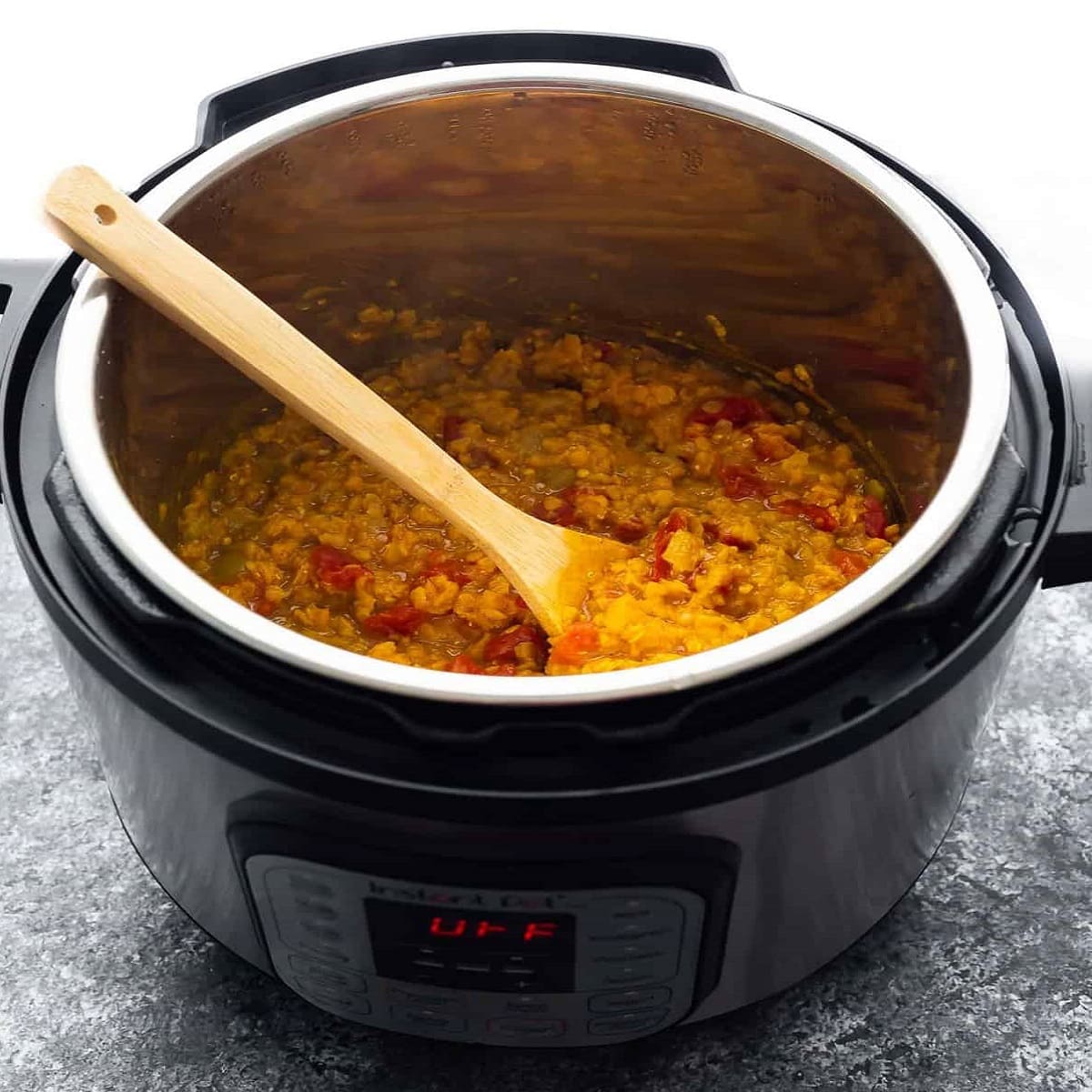
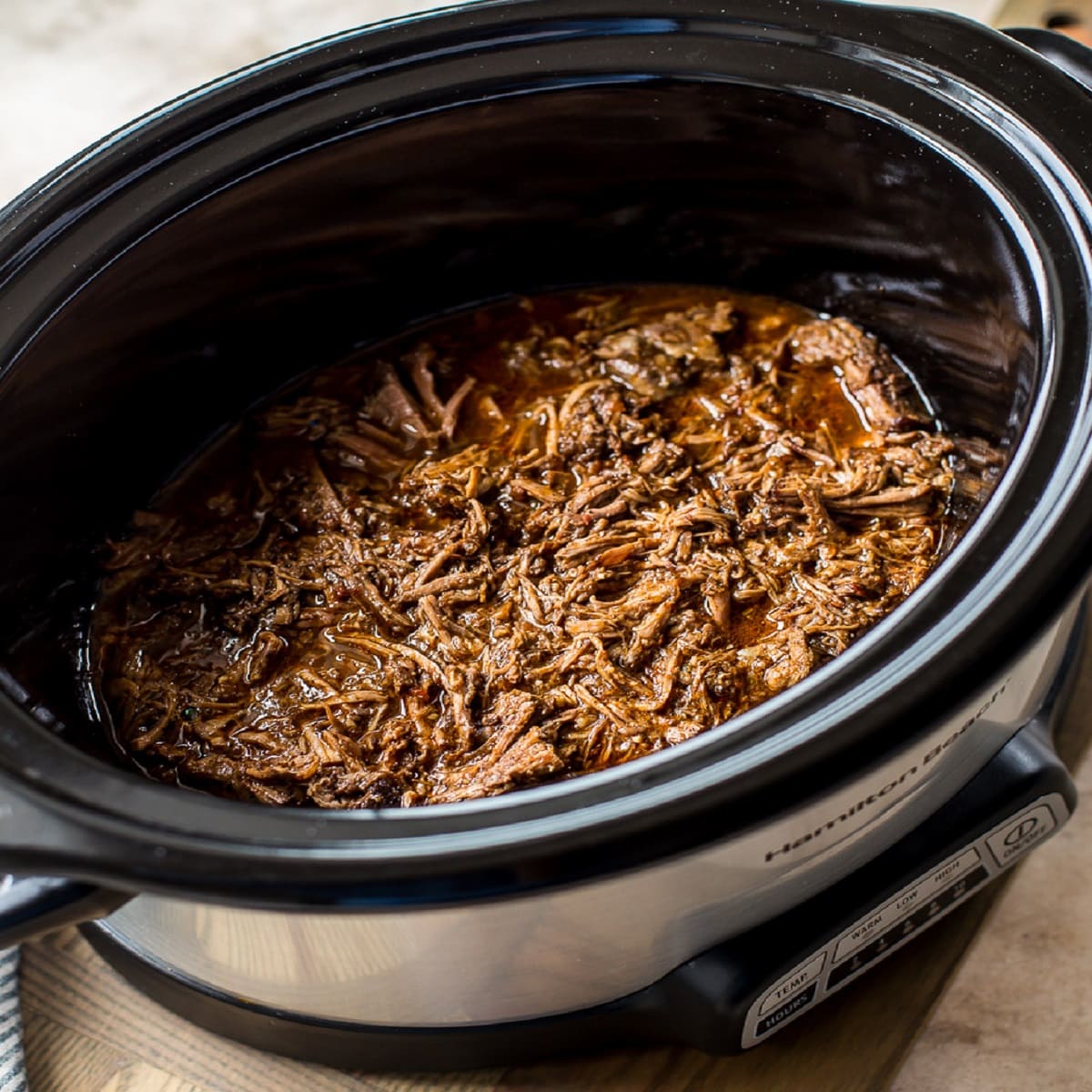
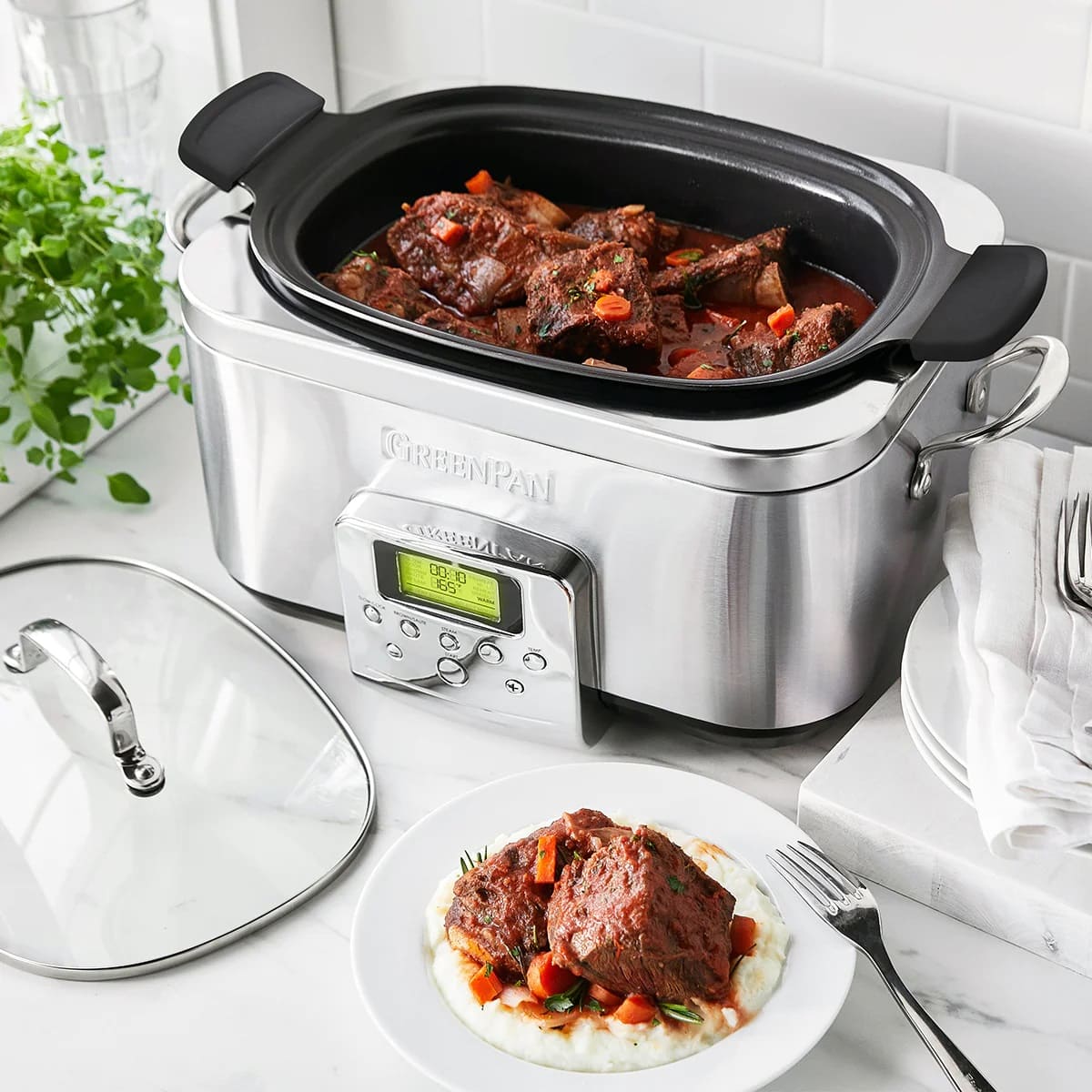
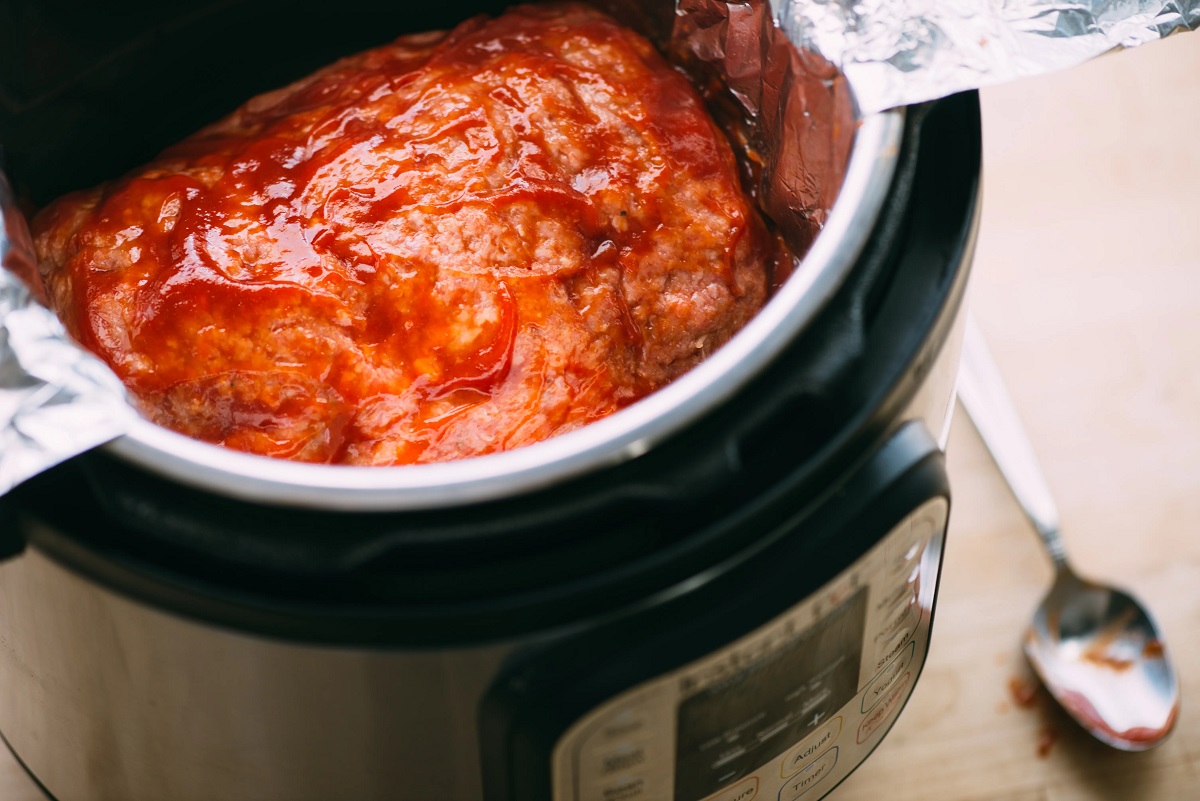





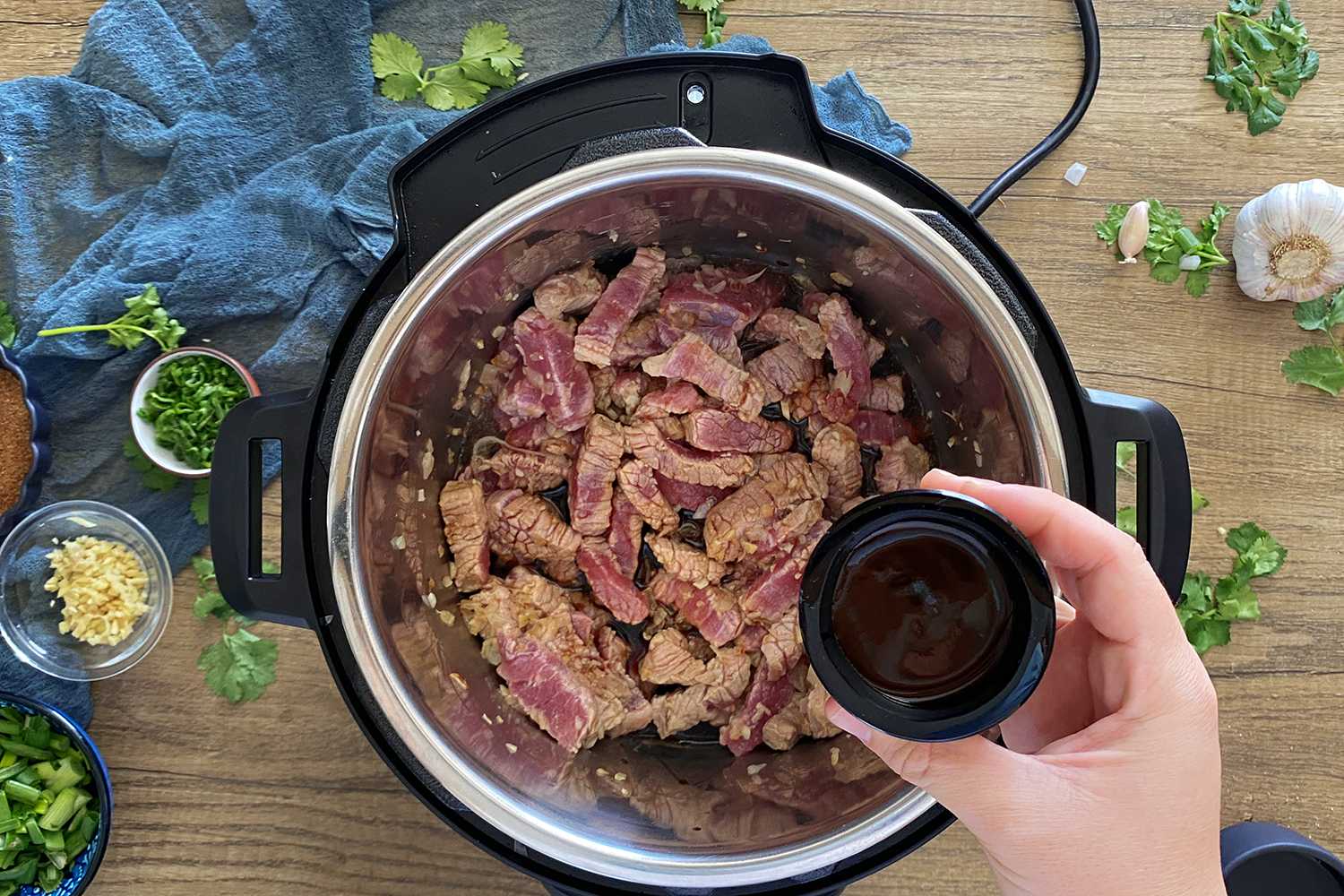
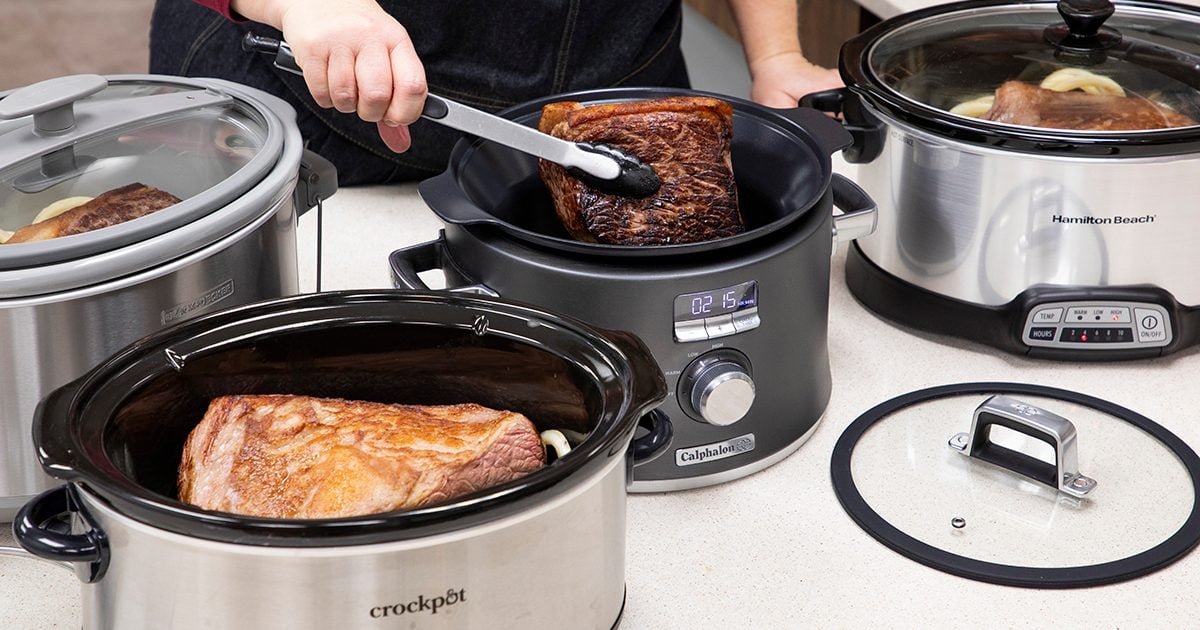
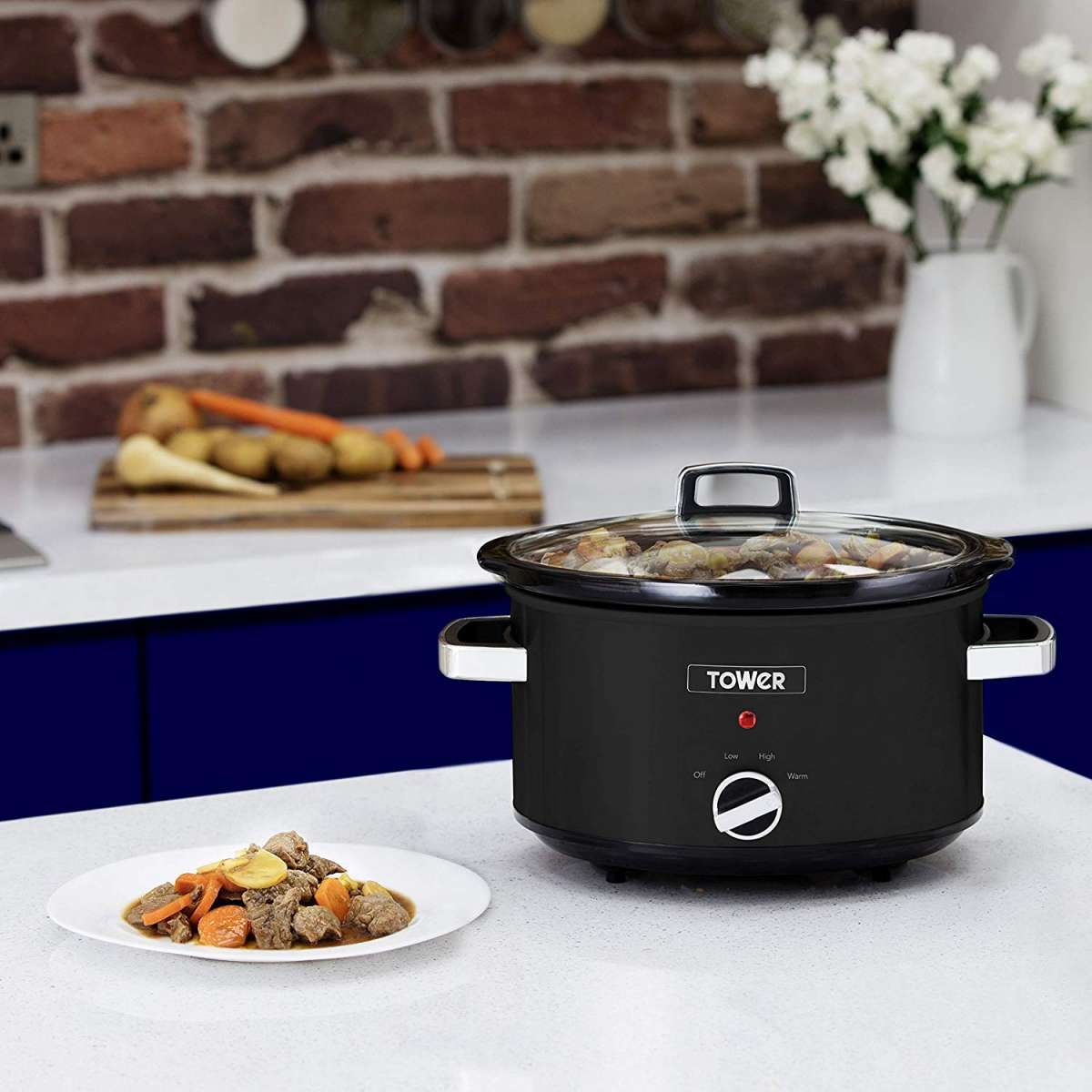


0 thoughts on “How To Fix Tough Meat In Slow Cooker”